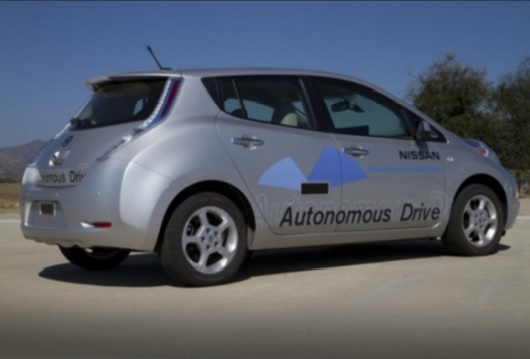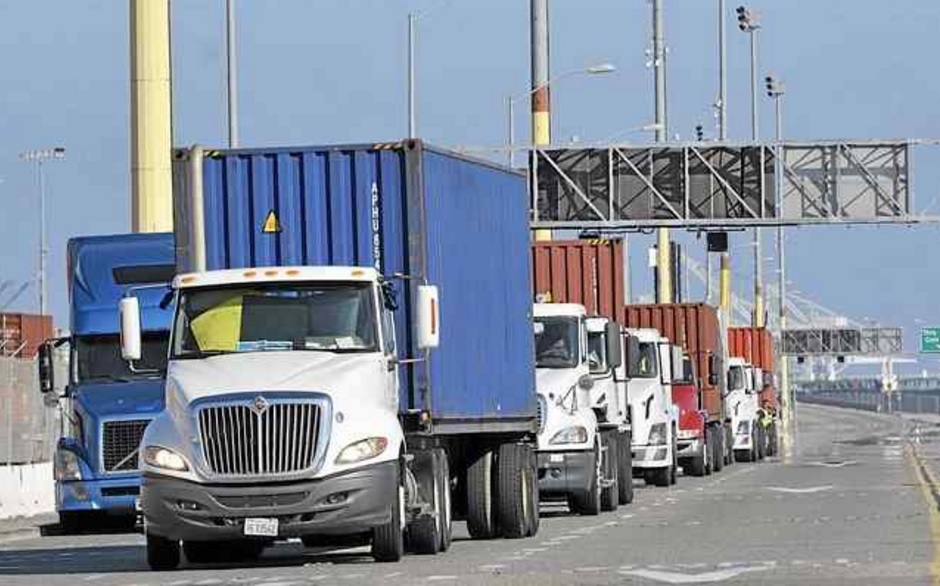Nissan Renault going mobile: The Nissan and Renault alliance is entering the self-driving, ride-hailing and shared rides business; and the cars will be electric. It won’t be happening overnight – not  likely before 2020 but within 10 years, a company executive said. The two companies have been testing self-driving vehicles. The mobility service will run on pre-mapped courses with predetermined pick-up and drop-off points. The automated system is being worked out with Japanese game software maker DeNA Co Ltd and French public transport operator Transdev SA. Several companies have revealed similar plans through alliances or on their own, including Ford, Uber, Lyft, Waymo, BMW, and General Motors. Tesla will offer its buyers fully autonomous cars that they can rent out for shared rides.
likely before 2020 but within 10 years, a company executive said. The two companies have been testing self-driving vehicles. The mobility service will run on pre-mapped courses with predetermined pick-up and drop-off points. The automated system is being worked out with Japanese game software maker DeNA Co Ltd and French public transport operator Transdev SA. Several companies have revealed similar plans through alliances or on their own, including Ford, Uber, Lyft, Waymo, BMW, and General Motors. Tesla will offer its buyers fully autonomous cars that they can rent out for shared rides.
25 years in clean transportation: CALSTART marks its 25th anniversary in October, with its symposium connecting transportation, jobs, and the environment. This gathering of national policymakers and industry leaders will explore market acceleration through transportation policies and technologies that result in creating more jobs, while meeting our climate and clean air goals. Solutions and actions to stimulate thinking toward a 2030 vision for a clean transportation economy will be explored. Stakeholders will gather on October 25 in Pasadena, Calif.
FuturePorts looks at role of clean trucks in port sustainability
The Ports of Los Angeles and Long Beach are striding forward on their commitment made a decade ago to bring clean trucks to the  southland. Trucks powered by renewable natural gas (RNG), batteries, and hydrogen are becoming part of entering the next phase, according to speakers yesterday at FuturePorts in Long Beach, Calif.
southland. Trucks powered by renewable natural gas (RNG), batteries, and hydrogen are becoming part of entering the next phase, according to speakers yesterday at FuturePorts in Long Beach, Calif.
More support for fleet operators acquiring these vehicles is likely to come from revenue collected through the state’s cap and trade auction funds, which came from the state’s AB 32 global warming measure, said Wayne Nastri, executive officer at South Coast Air Quality Management District. A new bill in Sacramento, if passed, addresses vehicle smog checks and could also provide more funding for clean heavy-duty trucks, he said.
Fleets in Southern California have been early adopters of RNG, using the clean fuel in refuse trucks, street sweepers, and buses, said George Minter, regional vice president, external affairs and environmental strategy for Southern California Gas Company (SoCalGas).
Yesterday also saw a major announcement by Los Angeles County’s Metropolitan Transportation Authority’s board authorizing the purchase of nearly 300 natural gas buses; the agency will be running them on RNG that can reduce exhaust emissions by as much as 98% when compared to MTA’s current buses.
The Advanced Clean Trucks (ACT) Now Plan was presented last month to the ports of Los Angeles and Long Beach. California Natural Gas Vehicle Coalition submitted the plan directed at drayage trucks serving the ports. The coalition is giving input as the ports adopt the 2017 Clean Air Action Plan. The ACT Now Plan encompasses all zero- and near-zero emission technologies and fuels, including natural gas, propane, battery electric, hydrogen fuel cell electric, and others that meet a 0.02 g/bhp-hr NOx standard. The .02 standard has been supported by public fleets and transit agencies since being adopted by California Air Resources Board and Air Quality Management Districts about two years ago.
Transit buses, refuse trucks, and medium- and heavy-duty trucks built with Cummins Westport’s ISL G near zero certified natural gas 8.9-liter engine are fueled by renewable natural gas that’s reducing NOx emissions by 90% based on the .02 standard. A Cummins Westport 11.9-liter heavy-duty natural gas engine is awaiting certification by CARB and EPA, Minter said. Other vehicle and engine manufacturers may be rolling out technology suited for near zero emission trucks, especially as the 2023 deadline for hitting Clean Air Act targets approaches, he said.
Caroline Choi, senior vice president for regulatory affairs at Southern California Edison, said her utility has been exploring ways to “decarbonize” transportation through electric power. One project involved converting over cranes to run on electricity instead of diesel at the Port of Long Beach. Electric medium- and heavy-duty trucks are on their way. The company is also getting involved in test projects using electric rubber tired gantry cranes and yard tractors, she said.
Consumers and fleet operators also want to know more about rate costs tied to charging electric vehicles, Choi said. The utility is looking into rate pricing to keep it stable and eliminate demand charges.
Ash Corson, alternative fuels vehicle manager for Toyota, talked about Toyota’s Project Portal, which is testing out heavy-duty fuel cell drayage trucks at the ports. Toyota engineers have been working on hydrogen-fueled Class 8 trucks capable of carrying up to 80,000 pounds. A Toyota video showed a fuel cell truck having a lot more torque power than a diesel truck.
Choi and Minter engaged in a bit of banter over which technology, electric or RNG, is really zero emissions – or less. Minter made the point that RNG can go lower than electric, with some of it reaching net negative in emissions when the material comes from sewage treatment plants, landfills, and particularly from dairies. Choi distinguished clean energy, coming from renewable sources like wind and solar, from renewable fuels like biomethane.
Nastri reiterated SCAQMD’s stance on being technology neutral, supporting technologies that are dramatically reducing vehicle emissions. All of the panelists agreed on that point, and emphasized being cooperative in the decades-long battle between petroleum and clean fuels.



